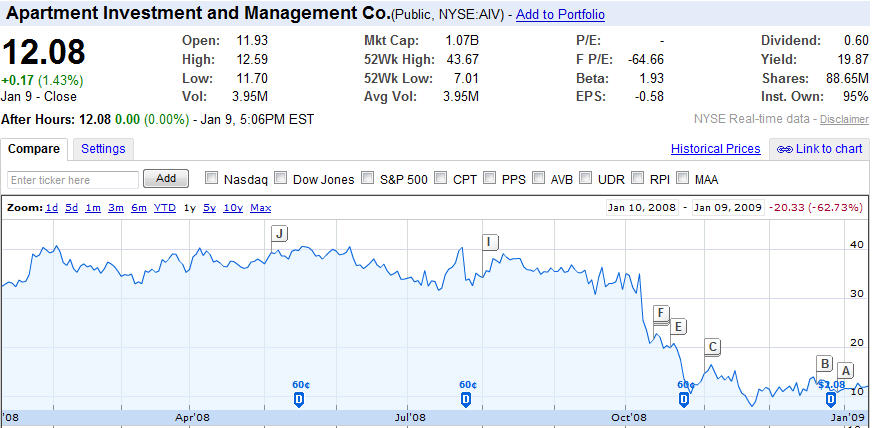An article in the NM Business Weekly today, indicates that Albuquerque’s economy is doing better than most – based primarily one one stat – the lack of volatility in housing prices.
Bad news, good news, have you heard the joke about the economist?
The juxtaposition of news story about the economy are interesting – on one hand the Federal government has declared a victory on turning around the economy, on the other, those of us in the commercial real estate business know that until there is transparency in the lenders holdings, the loans will not flow, the capital markets will not return, and the transaction volume will remain virtually non-existent.
Good news from the Albuquerque Journal (need I say anymore?)

The not so good news about capital markets in the commercial real estate world, from yesterday’s RealShare conference titled Warning Signs.
The Wall Street Journal had a dour article on the ballooning balance of commercial backed securities.
President Truman once asked an economist his opinion –the economist replied with something like “on one hand it could be good, on the other hand it could be bad” to which Truman quipped “next time bring me a one handed economist”
Small housing… now portable?
My friends and family will tell you that I’ve recently become a bit obssessed with Teardrop trailers – an offshoot of our family’s fabulous cross-country summer adventure.

My continual search for this perfect Teardrop trailer has yielded this trailer –
 .
.
I made a dozen or so trips to China, and can recall many amazing sites and feats that people were able to do on their bikes – from carryring a loady of 2x4s (on his shoulders) to more than one person on a bike – but nothing like the photo above. What do you suppose he does in that trailer? live? rent it out? store his mother in law?
(thanks to Kevin Cyr for taking the photo)
CCIM 2010 – final exam dates
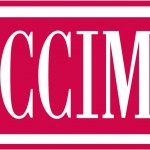
The CCIM instititute
posted today the dates for the Course Concepts Review and final exam for 2010:
Spring 2010 Program – New Orleans, LA
Portfolio Submission Deadline: January 12 CCR/Comp Exam Registration Deadline: March 23
CCR: April 18 – 19
Comp Exam: April 20
Fall 2010 Program – Orlando, FL
Portfolio Submission Deadline: July 13
CCR/Comp Exam Registration Deadline: September 21
CCR: October 19 – 20
Comp Exam: October 21
How cars have shaped modern society…

A good friend, developer, proffesor and author friend of mine, Chris Lienberger, wrote a fabulous book titled “Option of Urbanism” a couple of years ago. One of the items I was stunned to learn is that GM designed and presented their vision of a future metropolis – centered around cars.
Some sixty years later, many of our cities resemble that comment.
It is interesting to see how some communities are dealing with this issue by designing parking structures that don’t resemble parking lots…
Thanks to Gizmodo.com for sharing with us this lot from VW and this automated lot in Russia complete with a photo gallery.

Those of you interested in Chris’s book can purchase it here:
A new urban plan?

What could this image possible be – a new master planned community in a remote desert location?
No, believe it or not, it is the burning man festival (from 2005) – thanks to Gizmodo.com for the article
Now this is my kind of apartment
from the Cool Hunter website comes a possible design for a new W hotel…

The website features several perspectives and layouts on this apartment, which looks like a cross between BladeRunner and Space 1999.
Hey – who is that in my shower?
A great graphic example of competitive advantage

Many of us know the story of how Southwest Airlines has remained so profitable against bigger airlines – it focuses on its competitive advantages – they fly one model plane, they cross-train their staff, they turn (term for time plane lands til it takes off) planes twice as fast as the industry standard, they cut costs on things that don’t matter and they offer exceptional customer service.
This graphic does a great job detailing how competitive advantage works – thanks to
Gizmodo.com for finding the article (click the Gizmodo link for the full size image).
Rapid Ride – Green line starts today!
APS’s dismal graduation rate
In a copyright story by the Albuquerque Journal, the headline read “State: Almost Half of Class of 2008 Didn’t Graduate” and was followed by “Roughly half the students who should have graduated with the class of 2008 failed to do so, prompting a call to action by the state’s education secretary.”
While the headline is alarming, the data underneath it is suspicious.
How do I know? I worked as a consultant a couple of years ago on an education study for a developer to understand what was gonig on with APS enrollment.
In meeting wiht APS staff demographers, it came out that they didn’t track APS students once they left the system. So if you move to Los Lunas, you didn’t graduate, if you change schools to St. Pius, you didn’t graduate, if you move to Boston, attended and graduate from M.I.T., negotiate world peace, and win the Nobel Peace Prize, yes, you guessed it, APS believes you “didn’t graduate”.
Assuming 5% of all American’s move in any given year, and a four year high school attendance, fully 20% of the APS students could have “not graduated”.
Maybe its time for APS to spend some time and money and track its most precious resource, its students…
Albuquerque loses a stately historic apartment community

Fire last night destroyed one of Albuquerque’s best loved medium sized apartment communities- the Castle Apartments. Located between downtown and old town at 1410 Central SW, the 20 unit apartment community caught fire around 8pm and continued to burn in the Wednesday morning.

Built in 1922, the 15,150 square foot apartments featured amazing built-ins and was considered by many of its former residents, some of the nicest apartments in the Duke City.

Located just east of former mayor, Franz Huning’s estate, affectionally known as Huning Castle. The old Huning Castle estate was replaced in the a few years ago with the
As smoke blanketed downtown Albuquerque, News reports last night mistakenly indicated the newwer Huning Castle apartments were on fire, but later corrections indicated that residents from the Huning Castle apartments called in to the fire department about the fire at the Castle apartments.
Fortunatley no lives were lost, and our condolences go out to the families that own this historic gem and the residents who called it home.
Teaching an old building new tricks…
This doesn’t look so good…
Thanks to Gizmodo.com for the headsup on this diaster in Turkey!
ULI’s new economic dashboard

The Urban Land Institute has added an economic dashboard to it’s website – it can be found here .
The dashboard provides an update of leading economic indicators that often foreshadow changes in the real estate market.
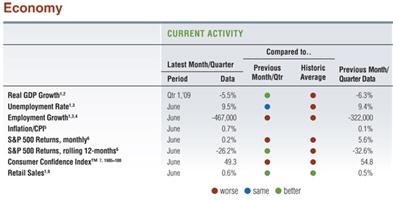
ULI also has one of the best real estate libraries that can be found in any organization.
2nd Qtr Capital Markets Update by Jamie Dick
Summary
The commercial real estate capital markets continue to operate in a constricted manner as the 2nd quarter of 2009 draws to a close. With CMBS associated lending completely shutdown income property borrowers must continue to focus on the life insurance, bank, credit union and private capital lender sectors for any financing needs for the foreseeable future. I see this limited availability of debt capital continuing through 2009 and into 2010 though there are some interesting new lending initiatives underway that may help to “turn back on” the CMBS lending faucet…albeit initially at a very, very slow rate.
Macro capital market pressures (i.e. massive U.S. government deficit spending) is beginning to put upward pressure on key interest rate indexes (please note the attached 10-year Treasury history chart) which has negated recent lower pricing spreads from some lenders currently in the market.
Due to the current (and potential ongoing) dramatic imbalance between capital demand (existing and projected loan maturities) and capital supply (lenders/capital in the market) underwriting standards are and will continue to be very conservative. Maximum LTV’s (for the very best properties) top out at 65% of current value with minimum debt-service-coverage hovering in the 1.30 range.
In the multifamily property sector Fannie Mae and Freddie Mac continue to be the lender bright spot though underwriting parameters have tightened recently.
Banks continue to be under increasing regulatory pressure. In 2007 a total of 7 banks were taken over by the FDIC. This number increased to 23 in 2008. As of today the FDIC has taken over 40 banks already this year. Expect many more before 2009 is done.
The inclusion of newly issued CMBS as eligible collateral for the federal government’s TALF loan program will create an opportunity for some select borrowers to access the capital markets but ultimate loans terms will be very conservative and pricing will be at a premium. Also the long term viability of this program is in question as currently the program is scheduled to expire at the end of 2009. To date no new loans have been originated through this program.
CMBS
The CMBS (conduit) lending window continues to be completely closed. To make the point of how important this is please note the following historical data. In 2007 $237 Billion in loans were funded to income property borrowers and then securitized through the Commercial Mortgage Backed Securities (CMBS) window. In 2008 this dropped to only $12.2 Billion. This year, 2009, the number is 0 (Zero) as of today. The last securitization of income property loans was completed in June 2008.
The closing of this “window” has resulted in a huge “hole” in the commercial real estate capital markets and the results have been predictable. Though college for me is a distant memory I do remember the basics of Econ 101 my 1st year at the University of Washington. If the supply of something goes down while the demand for it continues at the same pace the price and the difficulty of finding it will increase. This is what our industry is dealing with regarding debt.
The government, through providing the availability of TALF loan funds to buyers of newly issued CMBS, is hoping to jump-start this important source of funding for commercial real estate. Unfortunately I believe that the return of the CMBS lending will be a slow process.
I believe when CMBS lending returns it will resemble the very first CMBS lending almost 20 years ago. Ultimately it is the bond buyers who control the future of CMBS and today they have a similar attitude toward buying CMBS securities as they did in the early 90’s when the CMBS industry was first established. Any buyers of newly originated loans (or bonds associated with loans) will have the same level of concern, skepticism and distrust as the original buyers of CMBS did immediately after the RTC dominated late 1980’s and early 1990’s.
Borrowers should expect CMBS lending parameters to be conservative, thoroughly reviewed and underwritten, highly documented and pricey. Those of you who were in our industry “back in the day” will remember how CMBS lenders only loaned on “B & C” properties while the life insurance industry dominated lending on “A” properties. It wasn’t that CMBS lenders didn’t want to loan money to “A” borrowers, it was just they could not compete with the life insurance companies. This of course changed over the years until ultimately, from approximately 2001-2008 CMBS lenders dominated due to lower pricing and more aggressive underwriting. I expect CMBS lending will return soon, perhaps as soon as this year, but will look very much like it did in the early days of the industry and not the go-go years of 2004-2007.
Life Insurance Companies
Of our 16 life insurance company correspondent relationships 11 are currently “in the market” and quoting new loans. No huge changes in this category of lenders since my April newsletter/email as underwriting standards continue to be tight. Spreads have actually fallen during the past 7 weeks with all-in rates being in the 6.50% – 7.50% range. LTV’s continue to top out at 65% of current value (for the very best properties & borrowers) but lenders are really looking for loans in the 50% – 60% range. 5,7 and 10 year terms are available with 30 years amortizations acceptable for lower LTV requests. I continue to expect that the life insurance companies that are currently in the market for new loans will continue to be through the end of the year though underwriting parameters will begin to tighten at the beginning of the 4th quarter.
Banks / Credit Unions
The banking industry continues to be under significant regulatory pressure as the FDIC pays more and more attention to medium and small bank balance sheets. With the stabilization of the top 20 banks (who hold 65% of all deposits!) near completion the FDIC now can focus on the remaining 8400 banks in the US. If the Top 20 fall in the category of “Too Big To Fail” the balance of the banks clearly do not! In the 7 weeks since my last Update 11 more banks have failed for a year-to-date total of 40. If this pace continues another 46 banks will be taken over by the FDIC this year! My personal guess is it will be an even larger number. Needless to say this results in a VERY conservative atmosphere in the lending departments of banks across the country.
Fannie Mae / Freddie Mac
The brightest spot in the income property lending industry continues to be Fannie Mae and Freddie Mac for multifamily properties. Since my last email spreads have actually come down a bit though underwriting parameters have tightened. All-in pricing for new loans is in the 5.75% – 6.25% range depending on loan term and requested LTV. Besides lending on multifamily properties both agencies have programs for affordable housing projects, mobile home parks and senior housing. Not surprisingly, due to this debt capital availability, values of multifamily properties have held up the best of all income property types during the last year.
Private Capital
Private debt providers continue to grow in importance as an alternative to the closed CMBS “window” and constrictive bank underwriting requirements. Pricing is steep and collateral requirements expansive but these lenders can provide borrowers, faced with a significant & immediate financing need, a welcome alternative to a more traditional lender.
Bottom Line
No change from my last email…but perhaps just a stronger tone to make sure borrowers are listening…
1. If you are going to have a financing or refinancing need during the last 6 months of this year start now. Given the environment everything is taking longer than has been the case the past 5 years. It takes longer to find the right lender…it will take longer for them to do their underwriting…it will take longer to get loan approval…it will take longer to document and close the loan. I can’t emphasize this too strongly. Start your loan search early.
2. There are lenders lending money. The underwriting is tighter…the price is higher…the terms are tougher…but there are lenders lending. But as the year goes on I expect that there will be fewer and fewer as they begin to run out of their 2009 allocations. This definitely impacted our business last year during the 4th quarter and I expect it to happen again this year.
3. If you are a buyer or owner of multifamily it is a great time to be a borrower. If your property qualifies Fannie Mae and Freddie Mac are funding loans at prices that continue to allow a buyer to achieve true positive leverage…something we haven’t seen for some time!
4. If you have a problem with an existing property you own due to the properties debt do not hesitate calling in outside, expert help. We as a company and me personally are working with owners, on a consulting basis, to help them restructure their debt. Lenders, though no push-over, are open to discussions about restructuring debt. The sooner you get in front of your lenders the better if you think this is necessary. But go prepared and think about bringing an outside advisor. Not only will an advisor help you with identifying creative solutions but many lenders like having a 3rd party advisor involved in the process. It brings a dose of objectivity to the situation.
Please give me a call if I can be of any assistance with your financing needs. With the resources of Newmark Realty Capital, the #1 West Coast based commercial real estate mortgage banking firm, I know my colleagues and I can help you solve your issues. I hope this email finds you and your family healthy and look forward to working with you as we move through these interesting economic times.
Best Wishes!
Jamie
JAMES M. DICK
858.735.5963 DIRECT
949.419.3808 IRVINE OFFICE
949.777.9040 FAX
www.e-newmark.com
From one extreme to another in housing
 [/caption]
[/caption]
Having visisted Graceland right before driving to Asheville, NC to see the Biltmore Estate, it was very clear this house was and still commands the status of an “estate”.

And I must admit that as a destination/tourist magnet, the property is one of the best run venues I’ve been to – on part with how well Disney runs their entertainment venues.
Changes in real estate

Our family was at Elvis former mansion and last resting place this week, Graceland , and I was struck by the fact that housing has changed a lot since Elvis’s hey day.
In 1970 the average house size was 1,100 sf. Today it’s over 2,200 sf. Elvis’s big amenities were 3 TV’s, and a hundred disc record player.
The style, size and even taste of the house might be something any of our neighbors might have and besides the large lot it sat on, the house itself hardly seemed to qualify as a “mansion” by today’s standards.
(images courtesy wikipedia.org and bing maps)
Albuquerque is #1 (best place to live in 2009)
According to US News whose criteria was:
In selecting our Best Places to Live for 2009, U.S. News took a thrift-conscious approach: We looked for affordable communities that have strong economies and plenty of fun things to do. The cities we selected are as distinct as America itself—ranging from a quaint suburb to a live-music mecca. But whether you prefer hiking through the Rocky Mountains, pulling a fish out of the Atlantic Ocean, or grilling hot dogs at a college football tailgate, here are 10 places that will fill up your daybook without emptying your wallet
part II: Over Reaching Legislation – Seller financing update – how smart do you need to seller finance?
From fellow Realtor Ric Thom – Property Transfer Could Hinge on IQ and Net Worth If HR 1728 Passes As Is.
On May 26, 2009 I wrote about Congress restricting owner financing and how HR 1728 limits a property owner to selling only 1 property every 36 months if offering owner financing (HR 1728, see 101 definition (3)(E). This is just one more taking from our bundle of property rights. A copy of that letter is attached below.
In response, a group in DC pointed out that you could still use owner financing if you want to sell more than 1 property in a 3 year period if you register as a mortgage originator under the act.
EASIER SAID THAN DONE
To register as a mortgage loan originator you have to do the following:
1. Put up a $50,000 surety bond or meet minimum net worth requirements
2. Complete 20 hours of education on federal law, state law, and mortgage products
3. Pass a test with 75% proficiency
4. Pay an application fee
5. Prove you have not been foreclosed on in the last 3 years
6. Submit to a criminal background check
7. Supply a credit report
8. Demonstrate financial responsibility
9. Prove you have no outstanding judgments
10. That you have no tax liens
11. That you have not had a seriously delinquent account within the past 3 years.
12. Satisfy annual continuing education while selling your property
13. Pay a renewal fee if your property has not sold by Dec. 31st
These requirements are listed in the Housing and Recovery Act of 2008.
ARE YOU SMART ENOUGH?
So now you must pass a test to be able to transfer property. This is a slippery slope. It’s taking away our right to dispose of property as we see fit. What’s next? If you can’t pass the test you can only transfer private property every 3 years using owner financing. If you have a nonconforming property for which you cannot get conventional financing, you are in deep trouble.
ARE YOU WEALTHY ENOUGH?
So now you must prove a net worth, credit worthiness, or put up a surety bond of at least $50,000 in some states in order to sell your property. How does this help the consumer or property owner? If you have a poor credit history, you will not be able to become a mortgage originator in order to transfer your property using owner financing.
BACK DOOR TRANSFER TAX
The cost of continuing education, test fees, registration fees (paid to the government), surety bond fees, etc. would be oppressive on lower income families. I’ve been told this could range from $1,500 to $2,500. All this because you own property and want to offer owner finance terms. If the value of your property is $20,000 you just paid a 10% tax.
This is a non-partisan issue. This is about the government taking and limiting our ability to transfer or dispose of our real property as we see fit as granted under the 5th Amendment of the United States Constitution.
Owner finance, also called seller finance, is not a loan. It is an installment sale. The owners agree to receive their equity in the property from the buyer over time on terms negotiated between the two of them. No points are charged by the owner. There is no loan. There is no third party lending involved.
This bill passed in the House and is in the Senate. Its intent was to create standard practices and a national registry for mortgage brokers who originate home loans for the masses. The private property owner who wants to sell their vacant land, farm, ranch, land and mobile home, residence, rental house, etc. using owner financing should not be regulated and restricted by this bill.
Ask that owner financing be exempt from HR 1728. No compromises. We pay the people we trust to represent us. Let them know this is not right. Protect our basic right to transfer property we own. You know who to write. Please pass this on.
Thank you,
Ric Thom
President
Security Escrow Corporation
Albuquerque, NM
ricthom51@yahoo.com
(505)266-3487
Copyright 2009
A simplified methodolgy to perform HABU and determine residual land value
CCIM 102 – Module 4 Homework Review
If all else fails…the Bob Ward response
Albuquerque is #2!

Based on employment, quality of jobs, and the ability of cities to retain jobs in a down economy, Albuquerque came in #2 on Kiplingers Best Cities list.
Many of us know that good jobs are the drivers of demand for commercial real estate – and it is good affirmation for those investors who own and continue to buy in Albuquerque.
Overreaching legislation
Special thanks to fellow Realtor Ric Thom for sharing this:
This is an important message from Ric Thom, President Security Escrow Corporation, Albuquerque, New Mexico.
May 26, 2009
HR 1728: The Taking of Private Property Rights
Congress is trying to greatly restrict seller financing. This is a taking of our private property rights. The US House recently passed HR 1728 which limits you as an individual to sell real property using seller financing to only once every 36 months (HR 1728 Sec 101 Definition (3)(E)).
This bill was written to amend the Truth-In-Lending Act to regulate residential mortgage loan originators. This stems from the Secure and Fair Enforcement for Mortgage Licensing Act of 2008, or S.A.F.E, which established a national registry and standards for mortgage brokers. This is all directed at mortgage brokers, mortgage companies and banks. These are third parties that provide loan proceeds to the buyer to purchase property. That’s a good thing, but for some reason Congress has included private property owners who wish to sell their property using seller financing. Seller financing is where the buyer and seller negotiate a price, a payment plan, and interest rate. It’s an installment sale where the buyer pays the seller monthly and the buyer gets the use of the property. This is a frequently used method of buying and selling real estate especially in this economy of tight money. Banks are just not lending on, or are requiring huge amounts of cash down on, certain types of properties.
Seller financing is used tens of thousands of times every year, if not hundreds of thousands of times, to sell real estate. In New Mexico alone, with a population of fewer than 2,000,000, it is used over 5,000 times a year.
These acts are over-reaching and will have unintended consequences. The definition of a residential mortgage loan according to the Housing and Economic Recovery Act of 2008 means any loan primarily for personal, family or household use that is secured by a mortgage, deed of trust or other equivalent consensual security interest on a dwelling or on residential real estate upon which is constructed or is intended to be constructed a dwelling (Sec 1503 Definition (8)). This means any vacant land would fall under this act. A dwelling can be a house, condo, or mobile home. Here are just a few examples of the consequences:
• Let’s say you are about to lose your home and you need another $1000 a month to make ends meet. You decide to sell your five acres in the mountains and your 1982 single-wide mobile home on one acre by the lake to make your mortgage payment. Banks are not lending on these types of properties and you need a quick sale, so you use seller financing. The problem is you need to sell both to get an extra $1000 per month, but the government has prohibited you from doing so because of the one every 36 month rule.
• Suppose you have a self-directed IRA. Every year you buy property with cash out of the IRA. You then sell it using seller financing so you can get a 6% interest rate. You will be prohibited from doing so under the Act.
• Let’s say you have four rental houses that you own free and clear. Part of your retirement plan was to sell them using seller financing with a 6 to 7% interest rate and a 30 year amortization providing a nice, monthly income. You don’t want cash because CDs only pay 2% and you already lost money in the stock market. But, under this act you are prohibited from selling them now. You can only sell one every 36 months.
These scenarios go on and on. They are as unique as the individuals and the properties. Real estate is not just a house in a California suburb. It is also vacant land, non-conforming housing, land and mobile home, duplexes, triplexes, farms and ranches, and recreational properties. These types of properties would fall under the Act. Not everyone invests in the stock market. A lot of people invest in the above types of real estate. Not everyone wants to cash out when they sell their property; some people like seller financing for the income stream. Most states have escrow companies that hold the deeds or releases for buyers and sellers. They also keep track of the principal and interest and report interest to the IRS.
This bill takes away our right to use seller financing as we see fit. House Bill HR 1728 should exempt anyone who offers or negotiates terms of a real property sale financed in whole or in part by the seller and secured by the seller’s real property.
Why should individuals who had nothing to do with this crises be punished for the sins of the greedy Wall-Streeters? These acts are for mortgage machines, not Ma and Pa. I know the government is concerned about predatory practices, but is seems the local district attorney would be a more effective hammer than to regulate, restrict, and police every real property owner in America. Besides, seller financing is not lending. It is an installment sale. The seller has agreed to receive their equity over time, plus a negotiated interest rate.
House Bill HR 1728 is headed for the US Senate. Please write your senator and have them exclude seller financing from these acts that are supposed to regulate the previously unlicensed mortgage brokers. Write your state’s Realtor Association and the National Association of Realtors and ask them to help stop the government from taking away our right to sell our property the way we want to and when we want to. There should not be any restriction on how many properties we sell during a certain time period.
What’s next – just one transaction every 5 years, or no seller financing at all? This restriction is the last thing America needs in this great real estate compression. Please act now. Exempt Seller Financing From HR 1728. Please forward this to anyone you think should know about this issue.
To locate your Senator go to http://www.senate.gov/senators
To locate your state’s Realtor Association go to: http://www.realtor.org/leadrshp.nsf/webassoc?OpenView
For further information contact:
Ric Thom
President
Security Escrow Corporation
Albuquerque, NM
ricthom51@yahoo.com
(505)266-3487
Property Tax update on Ministorage buildings in the Albuquerque MSA
Operations focus – are your property taxes to high?
With the changing economy, many owners are focusing their efforts on reducing operational expenses. One often overlooked item on the expense list is property taxes. The right of the local county to tax your property is embedded in New Mexico’s constitution which also spells out the valuation process and how your property tax bill is calculated. Understanding these state statutes allows an owner, or their tax protest agent, to minimize the property’s potential tax value and thus its value.
Understanding property tax value vs. market value
According to the state statutes, your property tax value is based on its “market” value from two years prior to the current tax year and they should revalue every property in the county every two years. In many counties it is common to find a small staff that is required to value hundreds of thousands of different parcels and property’s – an herculean task if approached individually. Lacking the staff to delve into the specific detail about your property, the assessor’s are allowed to do “bulk appraisals” of all similar property’s. For example, if a mini-storage property sold down the way for $5,000 a unit, and the assessor had knowledge of that sale, they might apply that value to all mini-storages in their county. This bulk appraisal methodology gives the assessor a wide scope of power to impact your property tax value and its eventually property tax bill.
The checks and balances in the system
To balance the assessor’s power, the state constitution provides two different mechanisms to the tax payer. Both of these mechanisms involve filing a protest of value. The primary protest mechanism is to file a protest of value within 30 days of receiving a notice of value. Typically, notices of value are mailed out no later than April 1st, of every year. The property tax owner can file a protest by mailing a letter, but most assessors prefer that the protest be filed by using their forms, which can be found online or at the county offices.
The protest process
Once a protest has been filed, it is incumbent upon the owner, or their tax protesting agent, to prove their new value is more accurate than the assessor’s value. Typically that process is done by completing a report that demonstrates the value of the property using income approach, comparable sales, and replication costs. Savvy owners and agents will have a plethora of other valuation methodologies and market information that they can include in their report. Sympathetic assessor’s will take this information into account and negotiate with the owner/agent to a new value. Hardnosed assessor’s will dial up the “pressure” on the owner using legal maneuvers such as filing subpoenas and interrogatories, as well as taking depositions from the owner, their managers and staff. In the event that a value cannot be agreed upon, the owner/agent will be called before a formal hearing board that will rule in favor of the assessor’s value or the owner’s value.
Key dates
The following is a rough timeline of the dates that must be tracked by the owner/agent as it relates to the property tax protest process:
|
Date |
Event |
|
Ideally before 4/1 |
Consultant and Owner sign contract for representation of owner during the property tax protest process |
|
No later than 4/1 |
Assessor’s sends out notice of value |
|
30 days of contract signing |
Owner provides information to consultant on property for Consultant’s analysis |
|
Usually no later than 4/30 |
Consultant files tax protest, provides copy owner |
|
Usually no later than 6/30 |
Consultant compiles report on property and delivers to Assessor’s office |
|
Usually no later than 8/30 |
Consultant and Appraisers in Assessor’s office meet and share information on property. Negotiations ad possible resolution of value often occur. |
|
Usually no later than 9/15 |
Assessor and Consultant meet at Formal Hearing |
|
Usually no later than 9/30 |
Formal Board mails results |
|
10/1 |
Assessor provide Treasurer with net value of portfolio, Treasurer calculates mill levy |
|
11/1 |
Treasurer sends out invoice for current calendar year, ½ due by 12/10, ½ due by 5/10 of following year |
Representing yourself vs. hiring a tax protest expert
If you have an interest in representing yourself, I would highly recommend taking a property tax course such as offered by our firm, or the local Realtors Associations. These day long courses run about $100 and provide you the detailed information you may need to win your case. Our firm is offering this course on April 28th, 2009 and more details can be found at www.canteraconsultants.com .
If you prefer to hire a tax protest agent, there are a number of local, regional and national choices – whose services can be purchased for a onetime fee, or on a contingency basis.
What to look for in a tax protest agent
As you interview property tax agents you should:
– Ask to see copies of their most recent reports – a protestor who doesn’t file a report, is not likely to get you the lowest possible valuation.
– Fully understand how their pricing for their services work – some have little incentive to do a thorough job to protest your taxes because they charge you a low monthly or annual fee to monitor your values.
– Ask for a copy of their contract – make sure you understand how you pay them and when. For example, some tax consultants charge just for the first years savings while other charge you for every year that value remains in place (it would be better to pay a 35% contingency fee on only the first year savings, than pay a 25% contingency fee on two years savings which would effectively cost you 50% of the savings).
– Ask for a summary report of their average track record for clients. We’ve seen tax consultants who average as little as 8% average reductions, and others that are in the double digits (our firm averages 24%). Don’t fall into the trap of being “sold” on their services when they tell you about their “best” case. For example, our firm lowered a valuation from $9M to $1M last year, an 89% reduction, which hardly represents our average of 24%.
– Discuss with them the process and how hands on they are
– Ask them what documentation they will need from you as owner. While it may be a chore to dig up old paperwork, if they don’t ask you for copies of old appraisals, surveys, phase I environmental audits, then they are not likely to be extremely diligent in obtaining the lowest value.
– Ask what experience the consultant has in your particular property niche – don’t for example, hire someone who specializes in office buildings and has never done a ministorage protest.
– Ask for testimonial letters from former clients and request their contact info to followup.
– If the tax consultant demands an upfront fee to analyze your property, move on as there are many other tax consultants who are glad to review your property and tell you if they think you have a case or not.
– Beware of consultants who imply they have a political “in” with an assessor. The state of New Mexico Tax and Revenue department has an auditing process to smoke out cases that were settled without merit.
– Ask for their resume and look for their additional experience in the market – a tax consultant who has been an active in the real estate community is likely to command more respect at a formal hearing, than an tax consultant who is a virtually an unknown entity in the market.
– Remember – the person you hire is your advocate, if you don’t have warm fuzzy feelings with them, move on to the next tax consultant.
Rule of thumb valuation benchmark for ministorage in the Albuquerque MSA
Although there are always unusual exceptions to every rule of thumb, in Sandoval County, the average property tax value per ministorage unit is $3,802, and in Bernalillo County it is $4,308. If you take your property’s value, divide it by the number of units you have, and your value is higher than either of these benchmarks, you might have a case to protest your value. If you are not sure, call your tax consultant and ask for a free review.
Impact on future value
If your property’s property tax bill is decreased by 24%, that increases the value a buyer will pay for your property in the future. For example, if your property tax bill is $40,000 a year before the protest and the tax consultant obtains a 24% reduction that would increase in your net operating income by $9,600. By applying a CAP rate of 7% against the $9,600 increases the property’s value by $137,142.
In short, by hiring a tax consultant to review and protest your property tax valuations, today’s ministorage owner can minimize operational expenses and maximize their long term value.
|
|
Todd Clarke CCIM is CEO of Cantera Consultants & Advisors Inc. As a 4th generation commercial real estate professional, he has protested over 1,000 property tax valuation cases in New Mexico for 18 years, winning 99% of the cases with an average reduction of 24%. Todd is the author of the “Understanding NM’s property tax system”.
Todd also maintains a commercial real estate blog at www.confessionsofaconsultant.com. He can be reached at 440-TODD or tclarke@toddclarke.com |
An update on property tax legislation
From the RANM newsletter dated 3/10/2009
FROM THE NEW MEXICO LEGISLATURE
Property Tax Disclosure Bills
Another property tax disclosure bill has moved in the Senate the last ten days. SB 564 (Duran), originally introduced in the Senate at the request of RANM, would require the property owner to provide the written declaration obtained from the county assessor stating the estimated taxes after sale of the house and valuation at the new price. The bill passed the Senate yesterday and now goes to the House.
HB 261 (Sandoval), introduced in the House, requires the seller or seller’s broker to obtain the future tax declaration from the county assessor. This is the bill we have worked to amend so that brokers are protected from liability. It passed the House and now goes to the Senate. Each bill has sufficient protections for real estate brokers.
SB 181 and SB 333 Property Tax Bills
Thanks for the great response to the Call to Action last week. SB 181 (Boitano) passed the Senate Finance Committee March 3 after the Call to Action and is now on the floor of the Senate for action. The bill would protect residential property with the annual 3 percent cap even upon sale of the property.
SB 333 would lower the maximum percentage of an undeveloped property’s market value which can be taxed from 33 1/3 percent to 16 2/3 percent. It has been on the schedule of the Senate Finance Committee for five days, and may not move.
My own 2 cents…
Senate Bill 564 is a good idea except where it snags apartment buildings… (apartments are in a purgatory area, and the last thing a seller wants to do is disclose a sale that many counties don’t require be disclosed)
The remaining bills only add to the mess that was created with partial disclosure, and will eventually lead to much larger bills for all of us (they seem to forget, when you push down values, everyone’s values, the mill levy increases) – if the goal is to achieve equity in the system – this doesn’t do it.
NM Apartment Market Review 2008/ Forecast 2009
Albuquerque Apartment market update2008 in review, looking forward to 2010 by Todd Clarke CCIM
The saying “may you live in interesting times” certainly seems to fit in today’s environment. Although the author and origin of this phrase is unknown, it is believed that it was composed as a curse and included two more phrases:
– May you come to the attention of those in authority
– May you find what you are looking for
Certainly, I think we could agree that our country’s financial sector is currently living under all three auspices.
In the following update, I attempt to summarize what is going on in today’s apartment market analyzing each of the components that the apartment market depends on for success, including a national perspective, and drilling down to our own local market.
Demand driver for apartment units
One of the fundamentals of the apartment industry is the concept that the occupancy of apartments is driven by population growth which is driven by job growth. By following job growth, one can make reasonable projections of future apartment occupancy.
National Employment
Between December 2007 and December 2009, unemployment increased by 2.3% to 7.2%, which means there are an additional 3,000,000 people without jobs. Unemployment has not been this high since 1992, and forecasts indicate this trends will likely continue as more and more companies are announcing layoffs.
Demand driver for apartment investors
The ability for an apartment investor to convert the equity in their property into cash depends on the liquidity of the financial markets, so financing is a major driver of buyer demand for apartment investments. When financing dries up the audience of future buyers becomes limited and, the investors risk rate increases as the safety of their net equity becomes less certain.
How did we get here?
Late in 2007, a perfect storm of excess liquidity, irrational exuberance, dubious rating assignments and quirky quant modeling (http://en.wikipedia.org/wiki/Quantitative_analyst ) assaulted investment markets in our country, and one by one, major banks, insurance companies, corporations, and now real estate investors are falling victim to the ensuing outcome.
As the economic trends continue to spread gloom and doom, comparisons are often made to depression era. I recently read John Kenneth Galbraith’s “The Great Crash of 1929” book which provides a detailed overview of that era. Certainly, some parallels exist between the two – the similarity of the downward spiral. The fact that both downturns were accelerated due to the great deal of leverage used for investments, limited cases of fraud, and the belief that the would continue to increase. The depression also was an unregulated free-for-all where numerous companies existed solely to invest in other companies, many of whom had only an idea and marginal cash flow or assets. Investors had limited information and bench marks to measure an investments return, except for its stock value. Today’s investor suffers from an overload of information and analysis, making it harder to sort out what is important and relevant versus the insignificant.
The largest difference between the 1930’s depression and today is three fold: improved transparency in market trades/information, increased sophistication of the market and increased oversight by our government.
Globally
From a macro perspective, part of the current economic crisis can be traced back to America’s ongoing trade deficit with countries like China. China in turn has reinvested our trade deficit dollars in USA government backed securities and treasury bills, effectively binding together the two countries economically even tighter. The national debt currently exceeds $10 trillion dollars (http://www.brillig.com/debt_clock/) and continues to increase at the rate of $3.31 billion a day since September of 2007.
China’s choice to reinvest those funds back into the United States, has increased the monetary supply, which has increased the access to capital for most investors. It created excess liquidity as there were more investors chasing few deals. As the market continued to climb to new heights, many investors started to believe in a “new methodology” for property values which only increased the disconnect between prices and the elementary market fundamentals. Said another way, as long as the market was increasing in value, more and more investors were willing to place their equity in any investment, with the hope of increasing prices, often ignoring the fact that the market was overdue for a correction, which historically purges the excesses of the market of equity and restore balance between the number of sellers and buyers of investments.
WTF? (where is the financing?)
On a Federal level, the government continues to encourage lenders to fund loans in the marketplace with carrots (bailouts), and sticks (threats of government takeover). Unfortunately the lack of liquidity in the marketplace will not be easily remedied with carrots or sticks, but only with trust.
The mortgage market has been cast as this decade’s financial villain, but the reality is that even though liar (no documentation) and ninja (no income, no job) loans did nothing to improve the industry’s reputation, only a small percentage of the market has actually defaulted on their loan.
The silent villain in this financial meltdown is also public policy or federal legislation. Although this legislation was intended to create more home ownership opportunities it did so by creating a new class of mortgages – subprime, named for the borrowers, who had less than ideal credit.
While the percentages of foreclosures for these mortgage products is higher than historical averages, there is something more toxic underlying these mortgages – known as CDO’s or collateralised-debt obligations. A recent article in the Economist does a fabulous job of describing these instruments and their undoing:
“Muddling the Mortgage
Yet the idea behind modeling got garbled when pools of mortgages were bundled up into collateralised-debt obligations (CDOs). The principle is simple enough. Imagine a waterfall of mortgage payments: the AAA investors at the top catch their share, the next in line take their share from what remains, and so on. At the bottom are the “equity investors” who get nothing if people default on their mortgage payments and the money runs out.Despite the theory, CDOs were hopeless, at least with hindsight (doesn’t that phrase come easily?). The cash flowing from mortgage payments into a single CDO had to filter up through several layers. Assets were bundled into a pool, securitised, stuffed into a CDO, bits of that plugged into the next CDO and so on and on. Each source of a CDO had interminable pages of its own documentation and conditions, and a typical CDO might receive income from several hundred sources. It was a lawyer’s paradise.
This baffling complexity could hardly be more different from an equity or an interest rate. It made CDOs impossible to model in anything but the most rudimentary way—all the more so because each one contained a unique combination of underlying assets. Each CDO would be sold on the basis of its own scenario, using central assumptions about the future of interest rates and defaults to “demonstrate” the payouts over, say, the next 30 years. This central scenario would then be “stress-tested” to show that the CDO was robust—though oddly the tests did not include a 20% fall in house prices.
This was modeling at its most feeble. Derivatives model an unknown price from today’s known market prices. By contrast, modeling from history is dangerous. There was no guarantee that the future would be like the past, if only because the American housing market had never before been buoyed up by a frenzy of CDOs. In any case, there are not enough past housing data to form a rich statistical picture of the market—especially if you decide not to include the 1930s nationwide fall in house prices in your sample.”
-the Economist, “In Plato’s Cave”, January 22nd, 2009
Essentially, the Wall Street gurus packaged together a large bundle of mortgages, which then they split into a various pieces, obtaining a rating for each piece, obtaining insurance for those pieces with ratings, then selling those insured/rated portions of the mortgage pool as low risk assets.
Although there are a multitude of problems that have emerged, the largest is the total disconnect between the property owner and the property loan. As you pay the loan on your house today, the interest portion may go to one CDO, the principal portion to another, and the payoff of the loan to yet another. That all may work so long as you can make your loan payments. But if you lose your job and you can’t make loan payments, then which CDO do you negotiate with to buy more time?
Let’s say you’re an institutional investor, pension fund, or bank who owns a lot of these CDO’s and you see an uptick in foreclosures – in fact a doubling from the historical average of 3.5% to 7%. You would like to work with the property owners, but you don’t actually own their mortgage, just a piece of it. To work with the owner would require several other institutions to agree to work with the owner, which is unlikely, so the property goes into foreclosure.
With more foreclosures than the quant modeling indicated would ever be likely, the market for more collateralized mortgages evaporates, and now there aren’t any buyers for the good or bad parts of your portfolio.
Meanwhile, back in the neighborhood, home buyers are waiting to see if they can get a better deal from a future foreclosure than an existing seller, so the housing market starts to see a large decrease in the volume of sales. Pretty soon, buyers of home are waiting on the fence to see if better deals are around the corner, and the market activity goes from cool to freezing.
Without sufficient market comparable sales of homes or mortgage pools, it becomes harder for sellers of homes or sellers of mortgage backed securities to value their existing portfolios.
The nail in the coffin for a complete downward spiral: poorly defined account regulations
The lending log jam is further hampered by auditors in the accounting industry who feel the obligation to hold corporations to a series of accounting standards like the “FAS-157-Mark to Market” (http://www.toddclarke.net/?p=318). This standard impacts how corporations “value” their holdings. The auditors biggest complaint is the portions of this standard that leave it to the auditor to determine a discount rate. To an auditor, interpretation equates to increased auditor liability which further encourages the auditor to use a more aggressive discount rate than the market would typically experience.
The CCIM Institute is working with our nation’s leaders to provide clarity on these regulations. To quote CCIM’s national president, Mac McClure:
“Under the rules, the accountant must use three levels to mark to market: level 1 active trading market, level 2 observable market data, and level 3 auditor discretion or discounted cash flow. Just like the commercial real estate appraisal business, level 1 would imply the auditor must find comparables which, in a market like today, are really non-existent. Level 2 represents observable market data which, in today’s market, we have very little or no trading of Commercial Mortgage Backed Securities. Level 3 is the use of Discounted Cash Flow Analysis which is what we taught the RTC, FDIC, GAO, and all the other government agencies in 1987-1990 to use. In practice, accountants want to be told which one of these to use or they want to be given the flexibility to use the one that fits the situation clearly. Under the current rules, accountants are having a real problem getting to level 3 because of the wording “auditor discretion.” In my discussion with the head of one of the largest accounting and audit firms in the United States today, he said the word “auditor discretion” is the kiss of death for discounted cash flow because no auditor will jump that hurdle. Instead, they would rather deeply discount the value of the asset because there are no comparables or market data that subject themselves to the potential scrutiny of an Enron-type investigation. However, if those two words were eliminated, they would be free to use any of the three methods to underwrite value.”
As an analogy, let’s say you own a 100 unit apartment in a good location, that possesses minimal deferred maintenance, with a solid history of stable cash flows, that you recently purchased for $5M. In the last year, only one other apartment in that size range has sold and it was a a beater, down and out, crime infested in the worst neighborhood in the city. Since many sellers don’t have to sell, they wait to do so, which deprives the market place of good comparable sales, leaving only the desperate to sell.
According to an auditor/accountant, the lack of market comparables would make the Level 1 standard of an “active market” ineligible, and as this sale was the only “observer able market data” Level 2 doesn’t apply, so that leaves Level 3, the discount rate as the only available value option. Remembering the fate of Arthur/Anderson, the auditor picks a large discount rate (say 20%). All of a sudden the “value” of your property is far less than what you paid, than what you would sell it for today (or any day), and far less than the property’s loan, so your lender triggers a clause in your loan that allows them to call the entire balance if a particular loan to value ratio is not maintained. Foreclosure ensues, followed by a fire sale of the property, and if enough of these properties sell in distress, they will establish a new lower market value, which then starts the whole downward spiral over again.
This example illustrates the difference of using an average and aggressive discount rate on the same fictional property’s cash flows:
Net value of the property at 12% IRR Net value of the property at 32% IRR

The table on the left indicates the return an investor would receive for a $500,000 down payment on a series of future cash flows and a disposition in year 5. This return is a reasonable 12%.
Lacking comparable sales, auditors might use a much higher discount rate, say 32%. On paper, the net value of the property has decreased by $248,464 or 50%.
This example demonstrates that even though the property’s cash flow remained unchanged, its dynamics where still in balance, and it was performing quite well, but a few misguided words of legislation put the property, and the investor’s equity into jeopardy.
While this is a dire prediction, it seems many economists, like Susan Hudson-Wilson of Property Portfolio & Research (www.toddclarke.com/press/PPR_National_Employment-012009) are forecasting scenarios that include 32% decreases in national apartment values between 2007-2010.
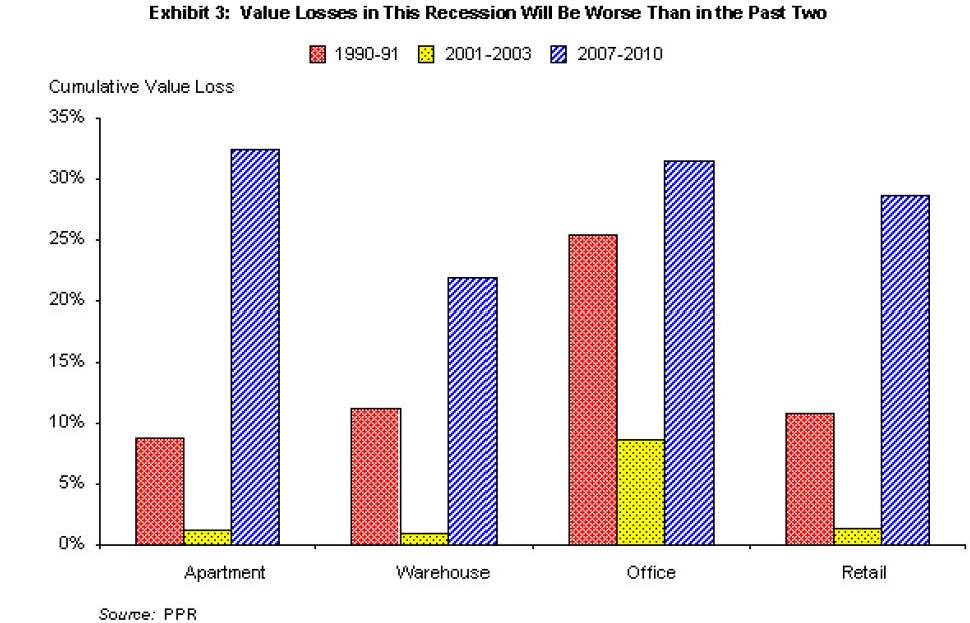
Trust and transparency is at the heart of all these issues
So what happens if you are a financial institution holding a pool of mortgages or a portion of mortgages that are “highly” rated and the cash flow is less than what you thought? How do you value the balance of your portfolio if the accounting standards are not clear? How do you make sane business decisions when the rest of the market is extremely volatile?
You don’t – instead you end up losing trust. You can’t trust the valuations for your own portfolios and investments. If you can no longer assign value to your own portfolio then how can you trust that other companies and banks can?
Trust is the lubrication that keeps market gears turning.
Most of our financial system is built on trust. Banks that used to loan each other money short term, often overnight, no longer do so because they aren’t sure what kind of financial condition the lender, or the borrower is in. So they start holding on to cash. They start hunkering down.
Our Federal Government realized this for a brief time last fall when they offered to let financial institutions sell their toxic debt to the taxpayers, to get a clean start. But the fallacy in doing so was that the government assumed every institutions knew bad debt from good debt – and as we’ve already discussed, once the auditors apply a steep discount rate to all of your investments, bad and good start to look alike.
Transparency follows trust or as President Reagan was once quoted saying “Trust but verify”. During 2008, financial intuitions wrote down large portions of their portfolios value, but they couldn’t explain to their stock holders how they arrived at those write downs, and quarter after quarter, more and more write downs followed, to the point that stock holders no longer understood what they owned either.
To stop a run on the banks, the Federal Government created the Troubled Assets Relief Program (TARP). An impressive amount of federal money was set aside to become a safety net for the banks and their toxic debts. It has been more than three months since TARP was passed, and I think many people are starting to realize that what the banks truly needed is a safety net. A tarp covers your assets during a storm but this TARP has become an opportunity for the government to intrude into the day to day operations of a company on issues like the executive compensation and company sales junkets. It’s a bit like reshuffling the chairs on the Titanic right after it hit the iceberg.
It has been recently reported that there are a number of local and regional banks that opted out of the ability to tap into the TARP funds due to the uncertainty associated with the strings that the government is imposing on TARP recipients.
Keep in mind, part of this mess was created by social tinkering by our government and the thought that more tinkering, or taking on more debt will solve this problem appears counter intuitive to the solutions the market and this country need.
So what can the Federal Government do?
One economist indicated the best thing the government could do to expedite a cleanup of this financial mess would be to mandate all federally insured institutions replace their top management by a certain date, or risk losing FDIC insurance. As the new officers came on board, they would be extremely diligent in finding all of their toxic debt, and shedding it as part of their turn around process.
Lacking that, a second financial market could be created without the regulatory shortcomings of the current market. This new market should have clear accounting rules and more importantly, one regulator to report to.
In short, until transparency in the bank holdings is created, ideally with sound valuation methodologies, trust will not exist between the players which will only prolong the capital market crisis.
Translating the residential real estate market to the commercial real estate market
If residential mortgages provided the fuel for the CDO’s spark that led to the fire of the current meltdown, how has this spread to other markets?
For the most part, commercial real estate and apartments continue to have sound fundamentals, but many of these properties have loans that are payable in full in the next couple of years. One of the world’s largest industrial investors, ProLogis, has billions of dollars of loans that renew on stabilized, class A, industrial properties in the next couple of years.
The shift from excess liquidity to scarcity of finance has put these investors in a tenuous position leaving them with the options of waiting it out, hoping liquidity is restored, or wholesaling their assets to use pent up equity to retire existing debt.
This has recently been evidenced by the thrashing of stock values experienced by Real Estate Investment Trusts like ProLogis, AIMCO, UDR, and General Growth. Most of which have started liquidating parts of their portfolio (http://www.toddclarke.net/?p=211).
And now, your local perspective
During 2008, Albuquerque felt like it lived in a parallel universe that was disconnected from the national economy – jobs continued to roll in, foreclosures were some of the lowest in the country, single family housing held on to most of its values, apartment occupancies continued to increase, as so did rental rates.
Albuquerque Employment Overview
The ongoing gloom and doom on a national level is starting to permeate the Albuquerque economy as the capital crunch continues to starve many businesses of the funding they need for day to day operations.
As you may know, Albuquerque was recently rated one of the top 5 cities in the country to build wealth in. Although the ups and downs of Eclipse Aviation’s bankruptcy have garnered major headlines, the labor department’s (http://www.dws.state.nm.us/dws-Mnews.html) latest release of employment data indicates that unemployment has been creeping up slowly since last summer’s announcement that it was at a 30 year low.
Albuquerque Sales last year
2008 was not a banner year for apartment sales in Albuquerque. The volume of sales decreased by 75% from $336M to $82M, with the 100+ unit apartments leading the way decreasing in sales from $277M to $37M. In fact, further analysis of the 100+ unit sales indicates that both sales that occurred in 2008, were actually put under contract in 2007. While the overall volume of sales decreased, valuation benchmarks showed only marginal decreases ranging from 10% to 15%.
This graph shows the percentage of the total apartment inventory that sold year by year.
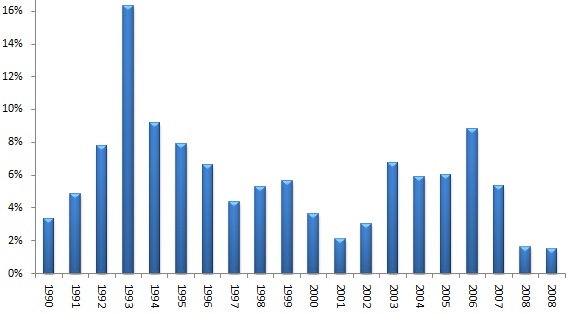
Break down by segment
Albuquerque is unique in that it has such an abundant supply of small and medium sized units allowing the small property investors to work their way up the investment ladder over time – conceivably making it possible today’s fourplexes investor to own a 100+ unit property in twenty years. As that investor moves up the apartment investment ladder to larger properties, they are able to support on-site management staff, 3rd party management, and increasing sophistication in property operations.
NM Apartment Advisors has broken down the classification of apartment investments into physical category descriptions that reflect the typical investor for that size range. Each of these investors has a different approach to value and desired yield.
Distressed Sales
For the first time in a long time, distressed sales are starting to have an impact in the average value of New Mexico apartment sales. NM Apartment Advisors classifies a sale that is listed as “short”, “foreclosure”, “fire” or “handyman special” as a distressed sale. In typical years, the number of distressed sales has a marginal impact on the overall marketplace, but in 2008, some 18.4% of the sales that occurred were sales under distress, which skewed market values even more than expected. For that reason, for those segments of the marketplace that experienced distressed sales (mostly apartments containing 8 units or less), two categories of the 2008 summary have been provided, one has all sales, and the other that only reflects the non-distressed sales.
The following is a summary of each of these segments of the marketplace:
100+ units: in total, the 100+ unit apartments makes up over 60% of the total number of units, but only 4% of the total number of apartment communities. During 2005-2007 buyers binged by buying up some 20% of the marketplace. Although two sales in this size range occurred in 2008, both were marketed and under contract in 2007, effectively making 2008 a year with no sales in this catergory.

*the “% sold of ABQ/RR” heading above represents the market churn, or the percentage of the marketplace that sold that year
NM Apartment Advisors Inc. took a property to market in this category in 2008, and was able to secure 18 offers from qualified buyers, but increasing volatility in the capital markets made securing financing all but impossible.
In summary, while buyer interest remains strong, buyers are limited today by lack of financing choices. In 2009, the deals most likely to close will be delivered to a purchaser with attractive assumable financing, or seller financing.
50to99 units: This segment of the marketplace makes up a small portion of the total inventory, and it is common to see very few transactions annually in this size range. For example, the only sale in 2007 was a 50 unit property that was sold to a condo converter. If we consider that sale to be an anomaly, then between 2006 to 2008, values on a price per unit increased 16%.

20to49 units: Like the 50 to 99 unit category, this portion of the marketplace is relatively small, but even it experienced a decrease in the total dollar volume of sales by 52%. CAP rates rose from 7.7% to 8.1% and the price per unit decreased 9% from its high in 2007.

5to19 units: While the overall volume of sales in this category decreased, the price per unit increased by 13%.

Fourplexes: although the fourplex marketplace only contains 9% of the marketplace in total number of units, they contain 35% of the total number of apartment communities. From 2007 to 2008, fourplexes experienced a decrease in sales volume of 64%, and a decrease in price per unit of 21%. 18% of all fourplex sales in 2008 were distressed sales, and even if those sales are excluded, the price per unit still decreased 14%.

Duplexes/Triplexes: Typically the units in this category often sell to owner/occupants who are more interested in the ability to live in the property than in its investment potential. Like the housing market, value decreases in this category are minimal. Adjusting for the 80% of the sales that were not distressed, the price per unit decreased by only 5%.

The impact of competitive investments in other markets
Although our office continues to receive phone calls from investors looking to expand their existing Albuquerque portfolio, many of them are chasing deals in markets that suffer from higher volatility like Phoenix, Las Vegas, the inland empire, and the Bay area which offer higher returns.
Local Financing
As dour as the financial news sounds, there are many local lenders in New Mexico who are continuing to loan on apartments. They’ve indicated that it’s back to the basics, sound property, sound borrower, sound underwriting, and for now, the lender is calling the shots on timing. Unfortunately, many of these lenders are capping their maximum loan at $20M.
To summarize
While Albuquerque’s internal economy is outperforming the national economy, the extended recession nationally is starting to take its toll locally and this could continue for a while. While many apartment values remain reasonably close to their recent high prices, an extended credit freeze could force more investors to liquidate at substantially discounted prices.
Our recommendation is simple – if your property has a loan that is good through 2012, and if you’re otherwise pleased with your property – we recommend you hold on to it until the national economy regains some sanity. If your property has a loan coming due in the next couple of years, we would highly recommend you begin working on refinancing that loan today, or worst case, realize that you may need to sell the property at a discount from the higher values the market experienced in 2006-2007.
The future going forward
Personally, I remain optimistic about the Albuquerque apartment market and I look forward to adding to our family’s portfolio with some of the opportunities that may arise this year.
And unlike the last major downturn, there is a lot of money waiting on the side lines, and a sense of optimism.
Rents/OccupancyStill to come – NM Apartment Advisors is currently updating its rent and occupancy survey, and upon completion, we will forward the results to you.
As always, I look forward to hearing from you about your property and your experiences during these interesting times.
Still here in New Mexico plugging away,
Todd Clarke CCIM
The above analysis is merely the opinion of a 20 year veteran in the commercial real estate sector, and it is based on the current market information, news stories, and anecdotal evidence as collected by its author, Todd Clarke. Additional analysis can be found on his commercial real estate blog, www.toddclarke.com.
Thanks to the folks at the NMBW for the press
Thanks to the folks at the New Mexico Business Weekly for the coverage about the kind of business we do.
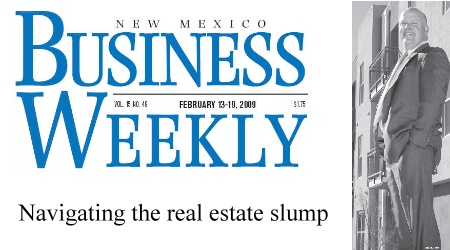
Click here to read more.
How global demographics and technology are changing the face of our planet
The video does a nice job of summarizing the acceleration of technolgy and its innovation. Couple that with changing demographics (for example, did you know there are more people who speak english in China, than there are people in the United States?
Do you procrastinate?
It’s true, many of us suffer from this disease- it is amazing – as a deadline approaches, so many of us end up giving the dog a bath, cleaning the house, filing paperwork, just about anything to keep us from focusing on the work at hand.
My wife, Kahleetah, and I think Sponge Bob typifies how many of us deal with a major assignment.
The solution? I found this article on steps to overcome procrastination at www.43folders.com .
So what do you do to overcome procrastination? I welcome any thoughts you have for a cure…

Albuquerque in top 5 for building wealth
AP neswire has a story that indicates that Albuquerque is 5th in the nation for pay.
The compensation experts at Salary.com uncovered the top US cities for building personal net worth by taking into account local salaries, cost of living and unemployment relative to the national average.
The other 4 cities include:
1. Plano, TX
2. Aurora, CO
3. Omaha, NB
4. Minneapolis, MN
Does this look familiar?
Wired Magazine has an article on the upcoming Terminator moved which has been filming in Albuquerque during the last year.
As New Mexico continues to beef up its filming resume, I remain amazed at how many buildings I recognize in various movies. Take this photo for example:

Although the photo shows a post apocalyptic scene of destruction (remember Terminator is the movie where the robots take over the earth and hunt down the humans), most Albuquerqean’s would know this building as the old rail yard (also featured in the Transformers movie).
CCIM’s take on Mark to Market accounting and its impact on the economy.
 I received this earlier last week from our good friend, Mac Maclure with an update on the how the definition of a phrase could be having a large impact on the current liquidation crisis:
I received this earlier last week from our good friend, Mac Maclure with an update on the how the definition of a phrase could be having a large impact on the current liquidation crisis:
Dear Members of the Faculty:
During this historic week in America as we experience another peaceful transition of power in our nation’s Capitol, your CCIM Management Team is approaching 2009 with a new outlook, new resolutions, and a fair amount of cautious optimism. While we have watched Wall Street and auto industry executives go before the U.S. Congress asking for bailouts, the commercial real estate industry continues to suffer from its own crisis. A vital CCIM member benefit is the Institute’s role as a legislative advocate for the commercial real estate industry. Through our affiliation with NAR and our partnership with IREM, we are part of a team that constantly monitors legislative and regulatory developments to shape the direction of today’s policy issues. In that role, the Institute must offer not only opinions but solutions to the current economic environment. This email addresses our approach to solving a number of the economic issues. While I recognize it is lengthy, I feel it is important that each of you have detailed information.
Chief Executive Officer Jonathan Salk and I went to Washington, D.C., in December to attend the NAR economic stimulus work group, which included representatives from various commercial real estate organizations. Prior to this meeting, the CCIM and IREM legislative committees were asked what a second economic stimulus package should include to stabilize commercial real estate markets. Both of our organizations felt that based on our member’s input, our legislative staff should develop a list of eight solutions, which are attached, that supported our stimulus provisions recommendations. The full Financial Crisis Background Paper is also attached. As a result, the NAR economic work group adopted six of the solutions as its platform, which are summarized in the attached Economic Stimulus Proposal.
However, as we all know the real benefit of our organization is the ability of our members to interact with Congress one on one in the district that elects them. For years our strength has always been in our grass roots involvement on a day to day basis. Therefore, I would like to give you a personal briefing of one of the major issues in our solutions fact sheet that should be addressed with each Congressman on a one on one basis by our members. The issue is called “Mark to Market” rules that were enacted after Enron in an attempt to eliminate potential problems in the accounting industry. Many people are running around Washington talking about “Mark to Market”, but few of them actually understand what they are talking about. Therefore, as Paul Harvey used to say, here is the rest of the story.
The Financial Accounting Standards Board has enacted a rule forwarded to the Securities and Exchange Commission called “FAS157 – Mark to Market”, which is used to determine the fair value for all CMBS programs as well as commercial real estate properties that are held in publicly traded vehicles. Each year under Federal Guidelines, auditors have got to, by Federal law, mark all publicly traded vehicles to market. Under the rules that the auditors work with, “FAS 157” fair value says the auditor must mark to market the new value of the asset every year on the balance sheet of the companies. Under the rules, the accountant must use three levels to mark to market: level 1 active trading market, level 2 observable market data, and level 3 auditor discretion or discounted cash flow. Just like the commercial real estate appraisal business, level 1 would imply the auditor must find comparables which, in a market like today, are really non-existent. Level 2 represents observable market data which, in today’s market, we have very little or no trading of Commercial Mortgage Backed Securities. Level 3 is the use of Discounted Cash Flow Analysis which is what we taught the RTC, FDIC, GAO, and all the other government agencies in 1987-1900 to use. In practice, accountants want to be told which one of these to use or they want to be given the flexibility to use the one that fits the situation clearly. Under the current rules, accountants are having a real problem getting to level 3 because of the wording “auditor discretion.” In my discussion with the head of one of the largest accounting and audit firms in the United States today, he said the word “auditor discretion” is the kiss of death for discounted cash flow because no auditor will jump that hurdle. Instead, they would rather deeply discount the value of the asset because there are no comparables or market data that subject themselves to the potential scrutiny of an Enron-type investigation. However, if those two words were eliminated, they would be free to use any of the three methods to underwrite value.
On January 13, NAR President Charles McMillan delivered testimony before the House of Representatives’ Committee on Financial Services and communicated these positions. Also on the 13th, the CCIM Institute cosigned letters, which are attached, to Representative Barney Frank and Senator Chris Dodd, that support a commercial-focused lending facility. Congressman Frank, chair of the U.S. House Committee on Financial Services, has introduced H.R. 384, which supports stabilizing and providing liquidity to the credit markets, including mortgage-backed securities.
This is just the start of this issue in Congress and we will be pursuing other opportunities with NAR and other coalition partners. We will also be flexible to consider issues that may not be part of our stimulus proposal. These difficult times present an opportunity for CCIMs to make our collective voice heard in the new administration. Join us on April 22 in Washington, D.C. for our annual Capitol Hill Visit Day and meet with your members of Congress. Go to http://www.ccim.com/members/govaffairs/capitol_hill.html for details and to register. As always, the CCIM Institute is very focused on advocacy efforts on behalf of this industry, and we need and appreciate your help to reinforce these messages with your own elected representatives.
If you have any questions or would like additional information regarding these efforts, please contact CCIM’s legislative staff at legislative_affairs@ccim.com.
Mac
Charles A. McClure, CCIM, CRE
2009 President – CCIM Institute
Chairman – McClure Partners
P.O. Box 802047
Dallas, Texas 75380-2047
972-663-3738 Office
214-384-9862 Mobile
mmcclure@mcclureusa.com
OP-ED- Equity in Property Taxes
OP-EDEquity in property taxes
Todd Clarke CCIM
The Albuqueruqe Journal editorial titled “Add Equity to State’s CAP on Property Taxes” dated January 23, 2009 contains only part of the information needed to make an informed decision about making changes to the NM property tax system.
As always, there are unintended consequences of any piece of legislation, and in 2000 the desire to protect New Mexico’s most vulnerable citizens, those low income seniors, has ended up protecting some of New Mexico’s largest property owners.
As the editorial indicated, House Bill 366 was enacted into law in 2000, was pushed by the Santa Fe County Assessor to protect long time elderly home owners from rapid increases in values from neighboring sales to out of state buyers. The stealthier part of this legislation was to undo a 30 year ban on the disclosure of real estate sales information. It is important to note that his legislation only impacted the taxable value of the property, not the tax bill (i.e. if the taxable value increased by the cap of 3%, but the mill levy increased 200%, the property owner’s tax bill would more than double).
Until the 2000 law was passed, County Assessors had a difficult time ascertaining “market value” for any given property, as they had a limited pool of comparable sales available to determine values. After the 2000 law, any residential property sold required that an affidavit be collected by the title company at the time of closing, disclosing the sales price of the property. Although the law stipulated five pieces of information be disclosed, some county assessors generated a multipage form that covered a lot more disclosure than the original law intended. The failure to do so allowed the county attorney to pursuing the seller and buyer for fines. The flipside of this legislation prevented the assessor offices from “disclosing” this sales information to the public, with the potential for similar fines and penalties to be applied to offending assessor’s employees. A year after the law was passed; some 80% of the county assessors who participated in an appraisal panel indicated a desire to repeal the law due to ambiguities in wording and the potential to create inequities in values between similar properties.
Those who spoke in favor of the disclosure of sales for residential properties indicated that with 3 to 5% of the housing inventory selling every year, in 15 to 20 years, many residential properties would be finally valued closer to “market value”.
Unfortunately, the potential to increase many “residential properties” is overlooked as evidenced by the fact 85% of the large apartment sales sold in the last couple of years in the three counties that make up the Albuquerque Metro area witnessed no increase in taxable value, and in fact benefit from the 3% cap on property value increases.
Meanwhile, commercial property owners stood on the sidelines, neither enjoying the benefits of the 3% cap on increasing values, nor the downsides of disclosure of property sales hoping that no one realized that many commercial properties are significantly undervalued.
Based on the information maintained in a database by our firm, Cantera Consultants & Advisors Inc. (CCA) believes that on average, most assessors had the value of their county’s portfolio at about 65% of “market value”. Idiosynchroncies in the tax law like the fact that the property tax bill you receive today is based on the value of the property two years prior further distanced the gap between assessors value and market value.
The lack of clear definitions of terms like “market value”, “residential” and “commercial” only allow more ambiguity to creep into the valuation process. For example, a survey performed by CCA in 2008 discovered that of the 33 county assessors in New Mexico 68% of those assessors consider an apartment building residential, while 32% believe they are commercial, and believe it or not, one county assessor thought it might be both. The state constitution and laws that have followed since lack a clear definition of “residential” and commercial is defined as “non-residential”.
Unfortunately, the valuation of your property is just one of several variables that determine your property tax bill – another is the percentage of the property’s value that is used to calculate your net taxable value, which is currently limited in state law to 33.33%, but in previous decades fluctuated widely. In his book, Cowboy in the Round House, former governor Bruce King writes: “In those days (prior to 1970), your tax evaluation fluctuated along with who might be in power. If your political party was in, that was one thing. If not, that was another. Your assessment was strictly up to the tax equalization board, which consisted of the country commissioners, the county assessor, an at-large Democrat, and at-large Republican. If they wanted to assess a building at 10% of its value, that was what they used. If they wanted 50%, that was it. In some counties, the assessments ran all the way up to 90%.” This hardly created an equitable property tax sytem.
The other variables that come into play between the assessor’s valuation of your property and the treasurers invoicing of property taxes include: property type designation ( residential, commercial, agricultural, etc.), the percentage that is used to calculate net taxable, the mill levy, and qualified exemptions for veterans, head of households, low income seniors, etc.
Representative Boitano’s bill to extend the 3-percent cap to all properties only opens the door to even larger abuses of the ambiguities of the law and enshrines higher property tax bills for all participants by decoupling the connection between a property’s true value and its tax bill.
The second bill repealing the 2000 law would restore equity to the valuation process, but would leave low income senior citizens vulnerable to sudden increases in property tax bills. The most transparent place to provide cover for these citizens in the exemption category.
Ideally, if New Mexican’s truly want an equitable property tax system, future debate and legislation should decide if NM is a disclosure or non-disclosure state, clarify the definitions of property categories, provide guidelines for the consistency of the valuation process across all counties and discuss the merits of providing special exemptions for any of its citizens.
Todd Clarke CCIM, has been performing property tax protests for the last 18 years as a consultant at Cantera Consultants & Advisors, Inc. and teaches a NMREC approved course on “Understanding Property Taxes in NM”.
What is a lease worth in the middle of no where?
How much would you pay to lease land that looked like this?

Not too much I would expect.
You know the old adage in real estate – location, location, location? Well it comes into play here as well.
Although I am a lifelong NM native, and I was born hundred miles due east of Upham, NM I had never heard of the name of this town, until our Governor, Bill Richardson, pushed through an initiative to turn it into Space Port America.
It was reported that earlier this month, the state of NM and Virgin Galatic signed a 20 year lease valued at $50,000,000. According to an article in the New Mexico Business Weekly the payments of the lease are based on the number of times the runway is used, so most likely this is the largest percentage lease every signed in the history of humankind.
KKOB TV Channel 4 reports that the lease is the next stage of what it takes to release state funding of $200M in infrastructure and construction.
So how did this remote location get chosen?
If you take a look at this map,

you can see that Upham is just over 150 miles south of Albuquerque, and about 30 miles north of Las Cruces and runs along the White Sands Misslie Range. The Range was originally part of the World War II project to develop nuclear weapons, known as the
Manhattan Project .
This large swath of land was condemned from New Mexican’s to support the war efforts and after the conclusion of the war was made part of the missile range for future testing.
A no fly zone exists over this part of NM (and in fact, a no drive zone as well) which makes this an ideal location to launch rockets into orbit as there is no cross traffic to compete with.
Few locations on the earth today have no-fly zone, so indeed, this location is unique and priceless.
From the lobo game
Book Review: Le Deal
Thanks to Anil Krishnamurthy for sending me my holiday read – Le Deal by J. Byrne Murphy.
Le Deal covers a well known American Developer who decided to expand into the European retail market. Le Deal gives great insight into the differences between development in Europe and America, and provides a handful of good laughs and great stores along the way – like this one from page 24:
Alan had his people run all the numbers and draw up the preliminary designs, and then trundled off to see the mayor of Hillsboro, to explain the concept, and to seek his support.
Alan told the mayor how the outlet would create four hundred new jobs, maybe six hundred if the center grew large enough. He estimated that there would be nearly five million dollars in property taxes flowing into his town’s coffers and four million shopping visits per year…
“ So Mr. Glen what do you want from me?” the Mayor asked at the end of the presentation.
“Well, Alan said, I want your support for the project, I’ll need zoning approval and a building permit to get started.”
The Mayor thought for a moment, then asked Alan, “May I see those drawings again?”
And when Alan unrolled the drawings, the mayor took out a pen and signed his name across the top of the first drawing, dated it, and said “Mr. Glen you just got your zoning approval and building permit – let’s get started.”
The whole interview, from beginning to end, had lasted less than an hour.
If you have an interest in how real estate in Europe differs from America, or in the back story on one of this country’s most successful outlet mall developers, I would highly recommended this book!
All referral proceeds from Amazon go to the CCIM Education Foundation.
How to maximize space
The New York Times has an article about a Hong Kong born/based architect who has maximized his 344 square foot studio apartment. Gary Chang has lived in this apartment for the last 32 years and recently spent over $200,000 improving it to by creating 24 different floorplans, uses and spaces.
He does this with moving walls, murphy beds, and hydralics.
It would be an understatement to say this is a cool apartment, in fact, it bares some similarities to Harrison Ford’s apartment in Blade Runner.

Are REIT’s the canary in the mine?
As major retailers like CompUsa, Mervyn’s, Linens and Things, Circuit City, fold one after another, leaving vacant spaces in major malls across the country, occupancy rates continue a downward trend, which eventually leads to decreasing rents and values.
Real Estate investors with the most leverage (i.e. the least amount of their own money), will be the hardest hit, but even lower leverage institutions are taking a hammering in their overall valuations.
What’s going on?
It has to do more with the capital markets than the dynamics of the real estate economy. According to a recent Wall Street Journal article, over $530 Billion dollars of loans are coming due in the next 3 years, including $160 Billion in 2009. Real Estate investors that counted on excess liquidity (or even some liquidity) in the marketplace, are now seeing their valuations hammered as the stock market’s perception is that many of these companies will be unwilling to renew their financing.
Some of this country’s largest owners, are
Real Estate Investment Trusts, or REIT’s are a special type of corporation (that is not double taxed) which allows passive investors to hedge their risk by investing in a large number of markets around the country (thus avoiding having all of their eggs stuck in one city).
As an indication of where Wall Street pessimism in the marketplace, take a look at the stock value of some of the largest and most well known REITS:
Equity Residential
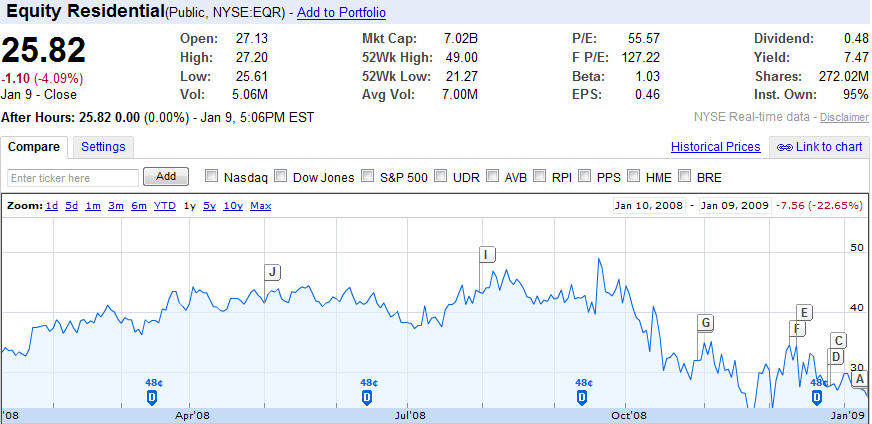
A Co-Star article indicates that REIT’s values have seen decreases of more than 40% and that many of them are likely to run into a liquidity crisis.
It certainly is an interesting time to be in the business – the recent meltdown of the subprime crisis had led to a crisis of trust between lender’s – so much so that the SEC was recently quoted as saying
“The trust and confidence that counterparties require in one another in order to lend, trade, or engage in similar risk-based transactions evaporated to varying degrees for each firm very quickly. What would have been more than sufficient in previous stressful periods was insufficient in more extreme times.”
From a bystander’s viewpoint, it has been interesting to witness the country’s politicians mickey mouse with the free market, then run from the issues, then hold hearings to find blame, and now they believe they can solve it?
Unfortunately, they’ve avoided discussing the root causes of the capital crisis – public policy initiatives to get every American into a home (whether they could afford it or not), government interference in the free market by offering home ownership preferential tax treatment, and a lack of oversight when Wall Street started going bezerk creating complex financial instruments that neither them, the rating agencies, the buyers or the sellers understood.
The original plan for Troubled Assets Relief Program T.A.R.P was to allow lender’s to clear their slate clean of these bad debts, thus opening the market for future financing.
And guess what?
We still don’t understand them, and until we do, no one knows who has the hot potatoes (the bad debts), and until due-diligence is done to uncover those assets, those same lender’s don’t know what to convey to T.A.R.P. and their assets remain frozen as there isn’t market to buy and convey what you can’t quantify.
Unfortunately, the market doesn’t wait for solutions, it just keeps rolling, and its rolling off the precipice if the real estate investors and developers can’t renew their loans on existing, performing, assets.
Right now, solutions are most likely to come from the following arenas:
1. The capital markets start to thaw and we see financing return to the marketplace
2. a seperate financing vehicle is created, possibly under the T.A.R.P. program
3. Lender’s convert their debt positions into equity (which would require government approval).
4. The property owners start to liquidate other holdings (Prologis just announced a large sale of their Asian holdings
Until then? Look for continue decreases in real estate equity and the possibility that the canary may die, before one of these solutions are expedited.
A motto for 2009? “Don’t be Stupid”
Thanks to my good friend, Sam Foster for turning me on to this article in the WSJ. The OP-ED piece by Daniel Henninger highlight’s one of today’s biggest issues for an investor – how to sort through the overwhelming amount of data and capitalize on the fact, while others are swapping cocktail conversation about the fiction.
Daniel goes on to say
“I’m still mesmerized by the virtually uncountable number of intelligent individuals worldwide who were revealed as dumb in 2008. What happened to them? What if mass dumbing down is now the norm?”
The Economist recently ran an online debate about the same issue – is our society getting smarter or dumber over time?
What are you thoughts?
Update to the NAR code of Ethics
The National Association of Realtors recently updated their code of ethics. Major changes involve disclosure of other parties when multiple offers come in… Wikipedia states that Ethical Codes are “The effectiveness of such codes of ethics depends on the extent to which to management supports them with sanctions and rewards. ”
So what do you think – do the Realtor Code of Ethics protect the consumer?



